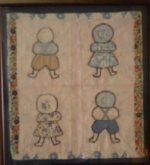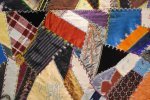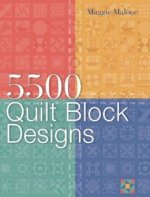Roman Square
This post may contain affiliate links. Read the full disclosure policy here.
The Roman Square block is an example of a four-patch or nine-patch pattern in which rectangles are first pieced into squares, then those squares are pieced into blocks. Although this is one of the simplest forms of strip piecing, the many combinations of layouts makes it appealing for quilters of all levels.
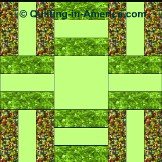 simple Roman Square
simple Roman SquareAlso known as Roman Stripe or Fine Woven, this block is composed of small squares composed of light fabric sandwiched between two bands of a darker color. The squares are joined so the bands are alternately horizontal and vertical, surrounding a solid square in the middle -- elegantly simple and visually complex at the same time.
Stunning Simplicity
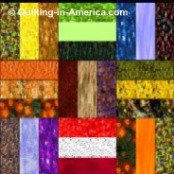 multi-colored Roman Square
multi-colored Roman SquareA particularly pretty variation involves using many different colors, though still maintaining the light and dark sandwiches.
Other variations of this block include Beggars Blocks, which are also known as Cat and Mice, Basket Weave, Rail Fence, and Spirit of St. Louis.

Beggars Blocks are frequently done in 2 colors, often with white as the light colored areas.
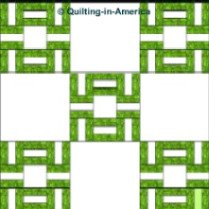 Beggars Block quilt
Beggars Block quiltBeggars Blocks are also composed of 8 small squares made of 2 dark bands sandwiching a light band surrounding a central light square; the stripes alternating horizontally and vertically.
To make the quilt top, these blocks are then joined with alternating white blocks.
Cat and Mice is the name used for this block by the Amish and Pennsylvania Dutch.
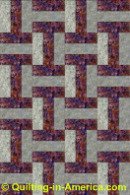 Basket Weave quilt
Basket Weave quiltBasket Weave is also a 2-color variation, but unlike Beggars Block, it is a 4-patch variation with half the squares being dark-light-dark and the other half light-dark-light.
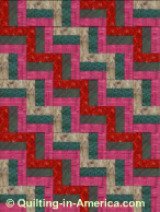 Rail Fence quilt
Rail Fence quiltRail Fence is a variation using Roman Square blocks in the layout whereby a "zig-zag" effect is achieved across the diagonal of the quilt.
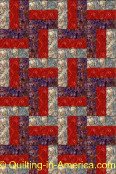 Spirit of St Louis
Spirit of St LouisSpirit of St. Louis is a 4-patch block that uses identical squares arranged in a pinwheel fashion so that clockwise from the center of the block, the same color rectangle faces right, then down, then left, and then up. When combined, the blocks form a series of light and dark pinwheels.
